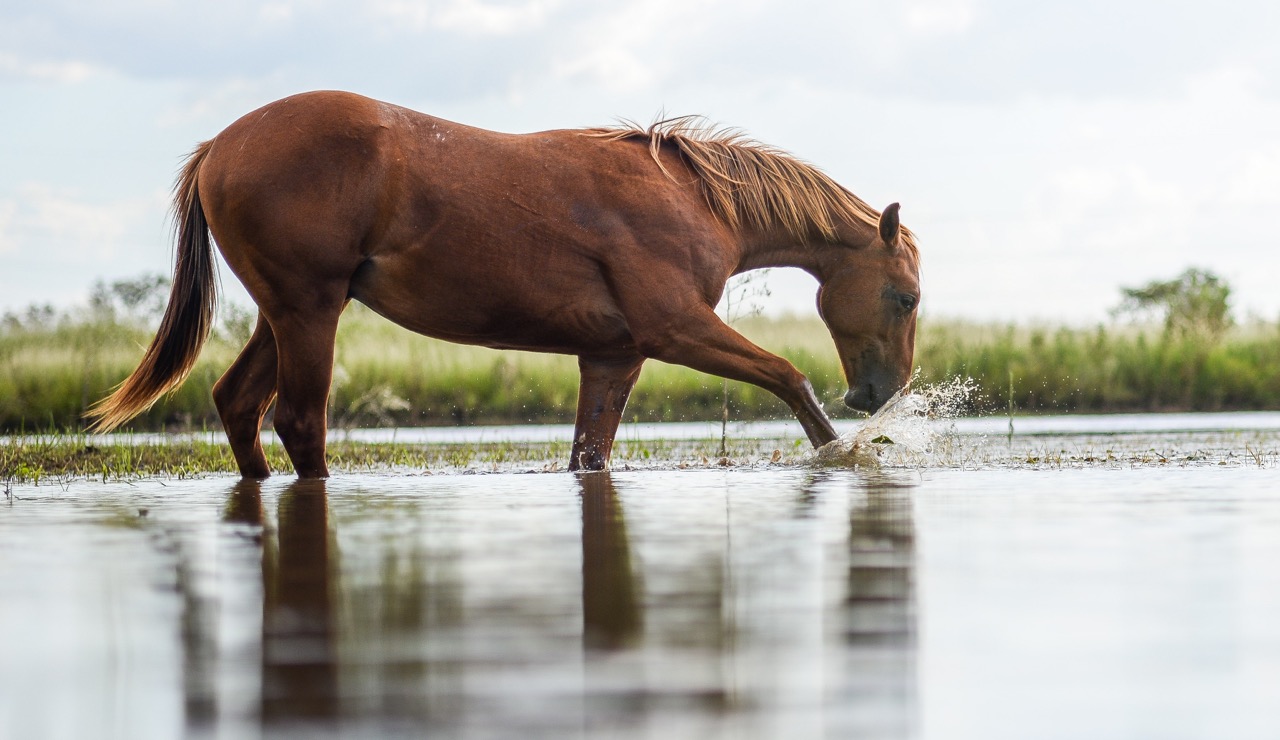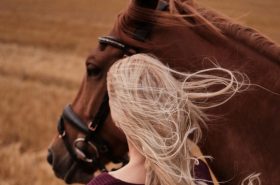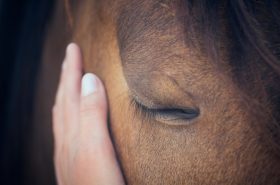Have you ever found yourself lost in the pages of a book?

Not that you felt lost, but you found that you could relate to the story in
the book. Or you found the information – which took you years to learn by experience – was nestled into the pages of just one
book? Well, I just did!
Recently I moved back to the area where I grew up. It has been a little over 5 years since I have been involved with a barn, or
even been on a horse, and whereas I am so ready to get back to my passion of working with horses again, I am feeling a bit
rusty. I wanted to find a way to refresh my memory before jumping back into working with horses, but with all of my
belongings still in storage, my personal horse books, and notes, aren’t exactly readily accessible. Thankfully I am a short
walk away from the library which happens to have quite the list of equine resources.
The Book
The first book I checked out was a copy of “How To Think Like A Horse: The Essential Handbook for Understanding Why Horses
Do What They Do” by Cherry Hill. And let me say, I highly recommend adding this book to your equine library! I was really
impressed by Cherry’s ability to compile, in one book, everything that took me years of experience to learn. After reading
through the 174 pages, filled with pictures, and examples, I felt like I had the exact refresher that I was looking for, in
addition to expanding my knowledge with the facts behind it. Cherry certainly knows how horses think, and she
communicates that so well in her writing.
What Stood Out To Me
It was really difficult to pull out only a few examples of what stood out to me from this book. Cherry has so much information
packed into a book with a normal sized font, loads of pictures, and illustrations, along with some of her own stories and
examples.
– First, Cherry does a wonderful job from the very beginning explaining how horses think, and why it is beneficial for us as
humans caring for, working with, and training horses, to think the way they do whenever we are around them.
– In Chapter 2, she covers the five senses of vision, hearing, smell, taste, and touch. I had a basic knowledge of these areas,
but I really enjoyed finding out more of the facts behind the five senses of horses.
For example, on page 25 I learned that the horse’s tears are collected in the lower eyelid and that there is a tiny little canal,
called the Nasolachrymal Duct, which drains out through the nose.
And then there is this quote from page 33 describing how sharp a horse’s sense of smell:
“The equine sense of smell is so acute that it can make a horse go off water if the source of his drinking water changes. He
can detect subtle differences in the mineral content and, depending on the horse, he might refuse to drink unfamiliar water.”
– I really liked in chapter 4 how Cherry pointed out that a horse’s curiosity aids in training, and is something that should be
valued and protected.
– One of my favorite topics that Cherry covered in Chapter 5 was sleep positions and rest periods. Not only did she once
again expand my limited knowledge of the equine sleep pattern, but she reminded me of the first time I ever heard a horse
snore. If you’ve never heard a horse snore, it is adorable! That is once you know they are snoring in their sleep… The
first time I heard a horse snore I was mucking stalls alone, and thought the poor horse was about to die on my inexperienced
watch. Thankfully the mare really was just getting some good sleep!
– Chapter 6 expresses how horses are individuals, and each horse has a different temperament. So many different horses
that I have worked with over the years came to mind while I was reading through this chapter. Each one is a unique individual
with different likes, and dislikes, and thank God for those differences! How else was I supposed to tell all those Bays apart?
Seriously though, it is the individual quirks that drew me to each of the horses I worked with and a big part of why I can bore
people at parties talking about the horses that I have had the pleasure of learning from.
– One of my favorite chapters was chapter 8, titled “Communication”. When I first heard how horses communicate with body
language, how they thought, and the herd dynamics, there was something in me that felt like “If someone understands this,
someone could understand me.” Cherry gives excellent details, paired with an illustration, to teach about the different types
of equine body language, and what it means. She also goes over how horses primarily read our body language, but how we
can also use our voices to assist in training as well.
 Never Stop Learning
Never Stop Learning
There are many things I love about the horse world, the first being the horses of course! But second to the horse is the fact that
there is always something new to learn. I have learned something new from every barn I have worked for, from books, from
trainer’s videos online, from clinics, and from formal training courses. Yet even with all that knowledge, I still have so much
more to learn!
Leave us a comment, and tell us about your favorite horse book titles, and authors!



